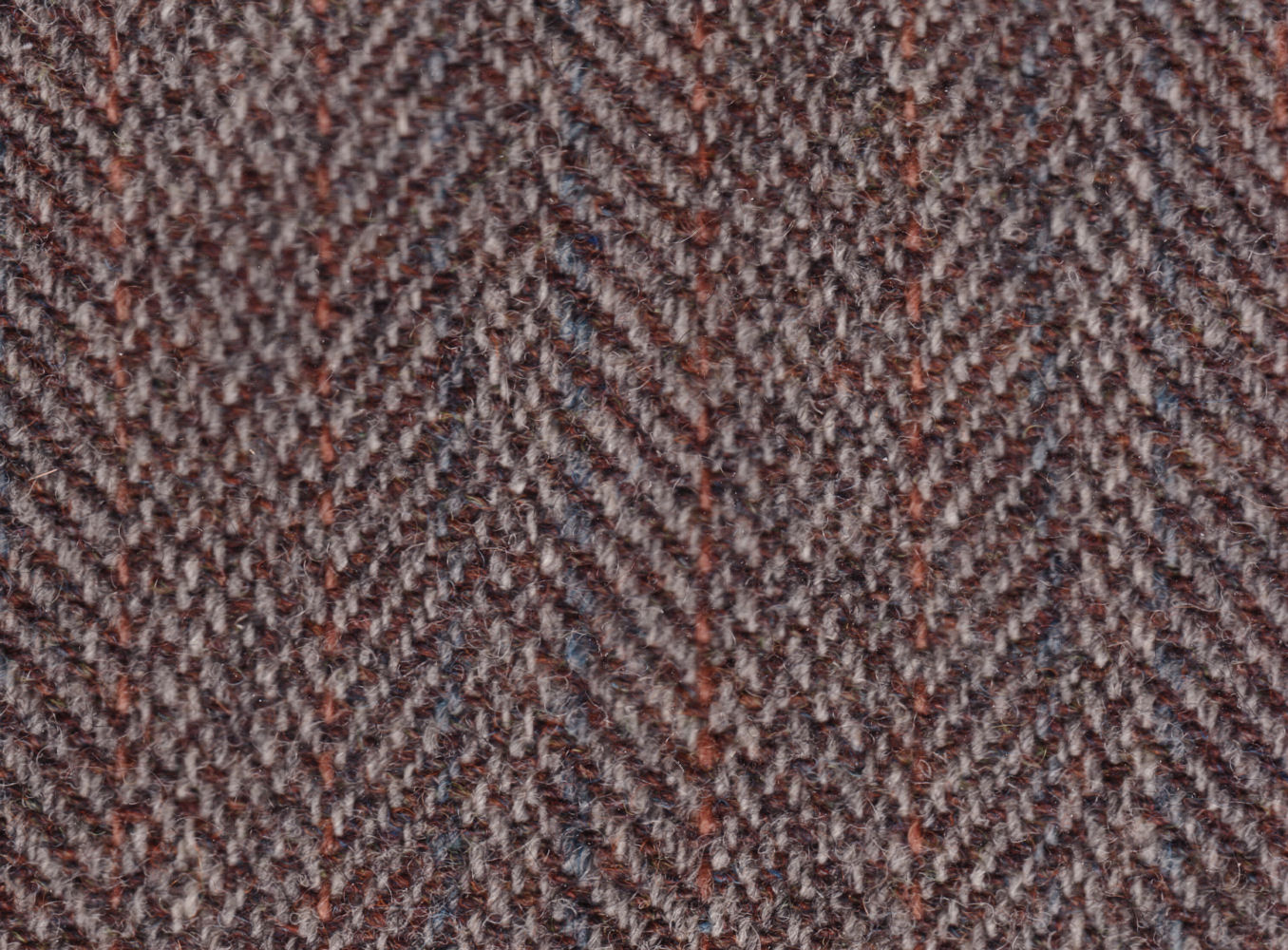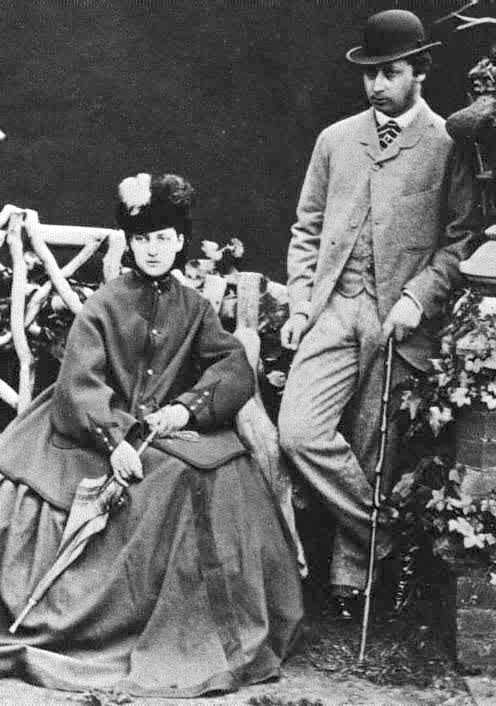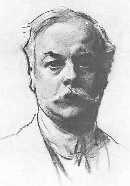|
Tweed (cloth)
Tweed is a rough, woollen fabric, of a soft, open, flexible texture, resembling cheviot or homespun, but more closely woven. It is usually woven with a plain weave, twill or herringbone structure. Colour effects in the yarn may be obtained by mixing dyed wool before it is spun. Tweeds are a staple of traditional Scottish, Irish, Welsh, and English clothing, being desirable for informal outerwear, due to the material being moisture-resistant and durable. Tweeds are made to withstand harsh climates and are commonly worn for outdoor activities such as shooting and hunting. In Ireland, tweed manufacturing is now most associated with County Donegal but originally covered the whole country. In Scotland, tweed manufacturing is most associated with the Isle of Harris in the Hebrides. Etymology The original name of the cloth was ''tweel'', Scots for twill, the material being woven in a twilled rather than a plain pattern. A traditional story has the name coming about almost by ... [...More Info...] [...Related Items...] OR: [Wikipedia] [Google] [Baidu] |
River Tweed
The River Tweed, or Tweed Water, is a river long that flows east across the Border region in Scotland and northern England. Tweed cloth derives its name from its association with the River Tweed. The Tweed is one of the great salmon rivers of Britain and the only river in England where an Environment Agency rod licence is not required for angling. The river generates a large income for the local borders region, attracting anglers from all around the world. Etymology ''Tweed'' may represent an Old Brittonic name meaning "border". A doubtful proposal is that the name is derived from a non-Celtic form of the Indo-European root ''*teuha-'' meaning "swell, grow powerful". Course The River Tweed flows primarily through the scenic Borders region of Scotland. Eastwards from the settlements on opposing banks of Birgham and Carham it forms the historic boundary between Scotland and England. It rises in the Lowther Hills at Tweed's Well near the rising points of the Clyde -- ... [...More Info...] [...Related Items...] OR: [Wikipedia] [Google] [Baidu] |
Ralph Lauren
Ralph Lauren ( ; ; born October 14, 1939) is an American fashion designer, philanthropist, and billionaire businessman, best known for founding the brand Ralph Lauren (brand), Ralph Lauren, a global multibillion-dollar enterprise. He stepped down as CEO of the company in September 2015 but remains executive chairman and chief creative officer. As of May 2025, his net worth is estimated at US$11.9 billion. Early life Lauren was born on October 14, 1939, in the Bronx, New York City, to Ashkenazi Jews, Ashkenazi Jewish immigrants Frieda Lifshitz (née Cutler) and Frank Lifshitz (né Efraim Lifshitz), an artist and house painter, from Pinsk, Second Polish Republic (now Belarus). His mother was from Drahichyn, Drohiczyn, Second Polish Republic (now Drahichyn, Belarus). The youngest of four siblings, he has two brothers and one sister. At the age of 16, he and his brother George Poitras Lauren legally changed their last name from Lifshitz to Lauren, due to School bullying, bullying a ... [...More Info...] [...Related Items...] OR: [Wikipedia] [Google] [Baidu] |
Herringbone (cloth)
Herringbone, also called broken twill weave, describes a distinctive V-shaped weaving pattern usually found in twill fabric. It is distinguished from a plain chevron by the break at reversal, which makes it resemble a broken zigzag. The pattern is called herringbone because it resembles the skeleton of a herring fish. Herringbone-patterned fabric is usually wool, and is one of the most popular cloths used for suits and outerwear. Tweed cloth is often woven with a herringbone pattern. Fatigue uniforms made from cotton in this weave were used by several militaries during and after World War II; in US use, they were often called HBTs. History Various herringbone weaves have been found in antiquity: * A pair of woolen leggings found in the permafrost of the Italian-Austrian Alps have a 2:2 herringbone weave, dating to 800 to 500 BC. * A dark blue cloth with a 2:2 herringbone weave was found at Murabba'at Cave in Israel, from the Roman period. * A textile with a 2:2 herringbo ... [...More Info...] [...Related Items...] OR: [Wikipedia] [Google] [Baidu] |
Edward VII
Edward VII (Albert Edward; 9 November 1841 – 6 May 1910) was King of the United Kingdom and the British Dominions, and Emperor of India, from 22 January 1901 until Death and state funeral of Edward VII, his death in 1910. The second child and eldest son of Queen Victoria and Prince Albert of Saxe-Coburg and Gotha, Edward, nicknamed "Bertie", was related to royalty throughout Europe. He was Prince of Wales and heir apparent to the British throne for almost 60 years. During his mother's reign, he was largely excluded from political influence and came to personify the fashionable, leisured elite. He Wedding of Prince Albert Edward and Princess Alexandra, married Princess Alexandra of Denmark in 1863, and the couple had six children. As Prince of Wales, Edward travelled throughout Britain performing ceremonial public duties and represented Britain on visits abroad. His tours of North America in 1860 and of the Indian subcontinent in 1875 proved popular successes. Despite the ap ... [...More Info...] [...Related Items...] OR: [Wikipedia] [Google] [Baidu] |
Glen Plaid
Glen plaid (short for Glen Urquhart plaid), also known as Glenurquhart check or Prince of Wales check, is a woollen fabric with a woven twill design of small and large checks. It is usually made of black/grey and white, or with more muted colours, particularly with two dark and two light stripes alternating with four dark and four light stripes, which creates a crossing pattern of irregular checks. Glen plaid as a woven pattern may be extended to cotton shirting and other non-woollen fabrics. Name The name is taken from the Glenurquhart Estate in Inverness-shire, Scotland, where the checked pattern was first used during the 1840s by the Countess of Seafield to fit out her gamekeepers, though the name 'Glen plaid' does not appear before 1926. Glen plaid is also known as the Prince of Wales check, as it was first made famous by King Edward VII when he was Prince of Wales. The pattern was later popularized by King Edward VIII when he was Prince of Wales. In other words, despi ... [...More Info...] [...Related Items...] OR: [Wikipedia] [Google] [Baidu] |
1960s Fashion
Fashion of the 1960s featured a number of diverse trends, as part of a decade that broke many fashion traditions, adopted new cultures, and launched a new age of social movements. Around the middle of the decade, fashions arising from small pockets of young people in a few urban centers received large amounts of media publicity and began to heavily influence both the ''haute couture'' of elite designers and the mass-market manufacturers. Examples include the mini skirt, miniskirt, culottes, go-go boots, and more experimental fashions, less often seen on the street, such as curved Polyvinyl chloride, PVC dresses and other PVC clothing, PVC clothes. Mary Quant popularized the mini skirt, miniskirt, and Jackie Kennedy introduced the pillbox hat; both became extremely popular. False eyelashes were worn by women throughout the 1960s. Hairstyles were a variety of lengths and styles. Psychedelic prints, neon colors, and mismatched patterns were in style. In the early to mid-1960s, Lo ... [...More Info...] [...Related Items...] OR: [Wikipedia] [Google] [Baidu] |
Houndstooth
Houndstooth is a pattern of alternating light and dark check (fabric), checks used on fabric. It is also known as hounds tooth check, hound's tooth (and similar spellings), dogstooth, dogtooth or dog's tooth. The duotone pattern is characterized by a tessellation of light and dark solid checks alternating with light-and-dark diagonally-striped checks—similar in pattern to gingham tartan, plaid but with diagonally-striped squares in place of gingham's blended-tone squares. Traditionally, houndstooth uses black and white, although other contrasting colour combinations may be used. History The oldest Bronze Age houndstooth textiles found so far are from the Hallstatt Celtic Salt Mine, Austria, 1500-1200 BC. One of the best known early occurrence of houndstooth is the Gerum Cloak, a garment uncovered in a Swedish peat bog, dated to between 360 and 100 BC. Contemporary houndstooth checks may have originated as a pattern in woven Tweed, tweed cloth from the Scotland, Scottish Lowl ... [...More Info...] [...Related Items...] OR: [Wikipedia] [Google] [Baidu] |
Kenneth Grahame
Kenneth Grahame ( ; 8 March 1859 – 6 July 1932) was a British writer. He is best remembered for the classic of children's literature ''The Wind in the Willows'' (1908). Born in Scotland, he spent most of his childhood with his grandmother in England, following the death of his mother and his father's inability to look after the children. After attending St Edward's School, Oxford, St Edward's School in Oxford, his ambition to attend university was thwarted and he joined the Bank of England, where he had a successful career. Before writing ''The Wind in the Willows'', he published three other books: ''Pagan Papers'' (1893), ''The Golden Age (Grahame), The Golden Age'' (1895), and ''Dream Days'' (1898). Biography Early life Grahame was born on 8 March 1859 at 32 Castle Street in Edinburgh. His parents were James Cunningham Grahame (1830–1887), Faculty of Advocates, advocate, and Elizabeth Ingles (1837–1864). When Grahame was a little more than a year old, his father was ap ... [...More Info...] [...Related Items...] OR: [Wikipedia] [Google] [Baidu] |
Plus-fours
Plus fours are breeches or trousers that extend four inches (10 cm) below the knee (and thus four inches longer than traditional knickerbockers, hence the name). Knickerbockers have been traditionally associated with sporting attire since the 1860s. Plus fours were introduced in the 1920s and became popular among sportsmen—particularly golfers and game shooters—because they allowed more freedom of movement than knickerbockers.''Fashion Encyclopedia''Plus fours An "extravagant, careless style that fit right in with the looser fashions and lifestyles of the 1920s", plus fours were introduced to the United States by Edward, Prince of Wales (later Edward VIII), during a trip in 1924. They were later brought back to prominence by the professional golfer Payne Stewart, who wore them on the PGA Tour (active years 1982–1999). In 2008, plus fours were featured in André Benjamin's Benjamin Bixby clothing line, which was based on clothing worn by Ivy League The Ivy L ... [...More Info...] [...Related Items...] OR: [Wikipedia] [Google] [Baidu] |
Norfolk Jacket
A Norfolk jacket is a loose, belted, single-breasted tweed jacket with box pleats on the back and front, with a belt or half-belt. It was originally designed as a shooting coat that did not bind when the elbow was raised to fire. Its origin is uncertain but it may have been named after Coke of Norfolk, the Duke of Norfolk, or after the county of Norfolk. It was made fashionable after the 1860s in the sporting circle of the Prince of Wales, later Edward VII, whose country residence was Sandringham House in Norfolk. The style was long popular for boys' jackets and suits, and is still used in some (primarily military and police) uniforms. History There have been several theories regarding the origin of the Norfolk jacket, although none are supported by much evidence. The first theory is that the jacket originated with Henry Fitzalan-Howard, 15th Duke of Norfolk, who invented it for use as a hunting coat in the late 1860s. According to this theory, the jacket was then discovered ... [...More Info...] [...Related Items...] OR: [Wikipedia] [Google] [Baidu] |







